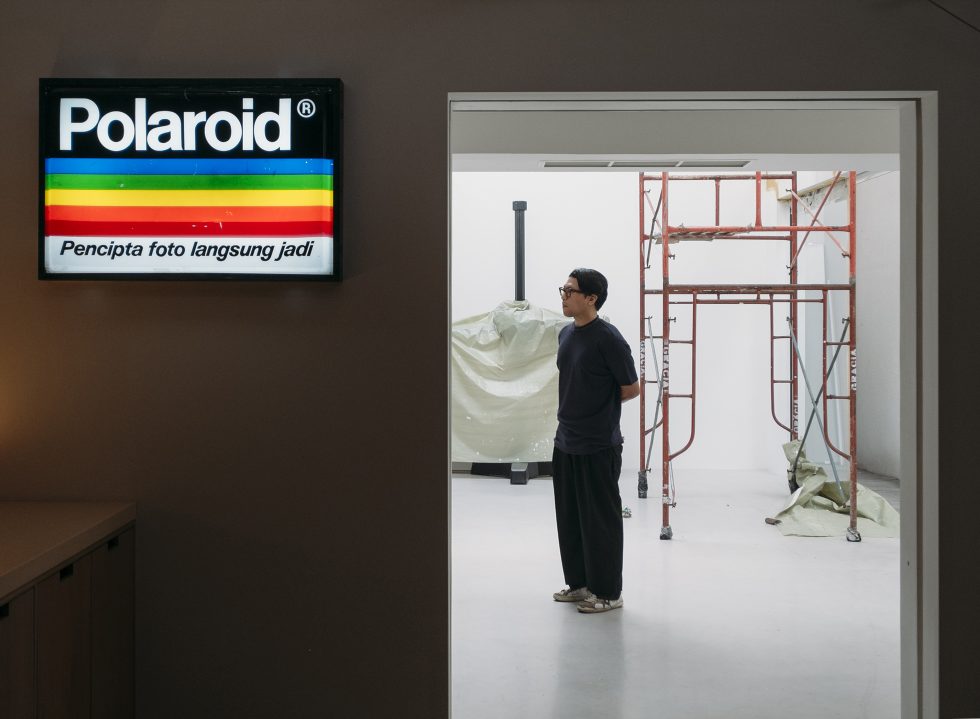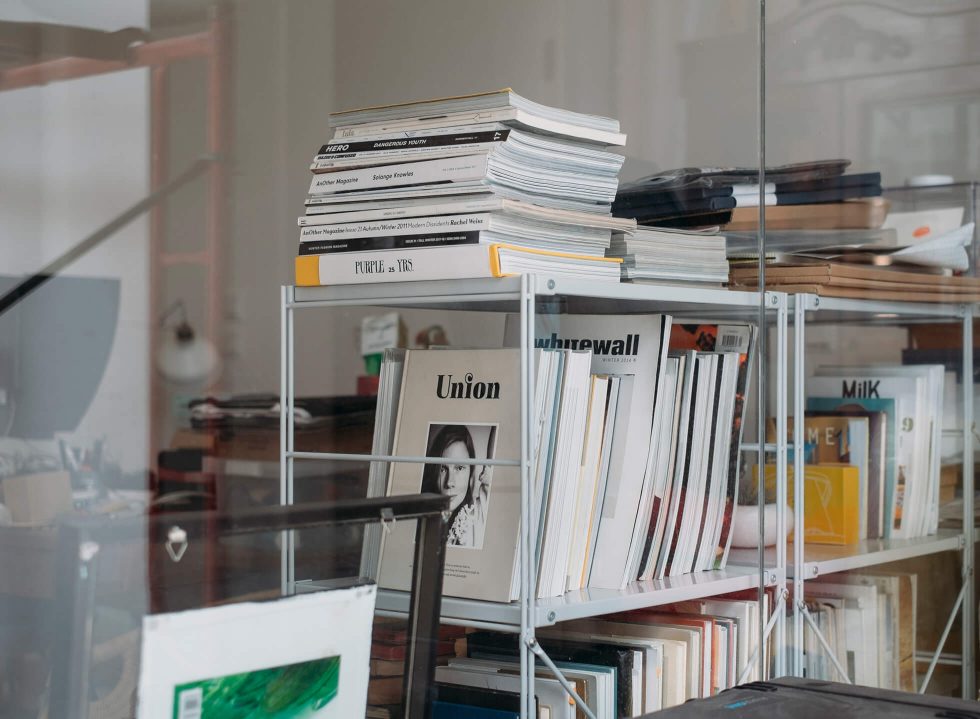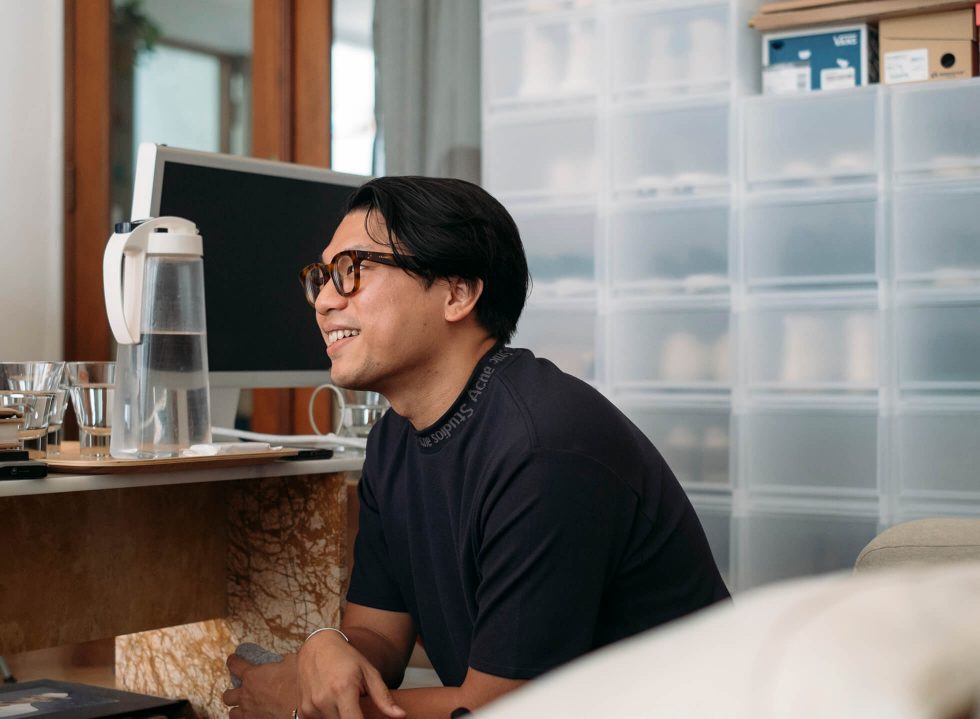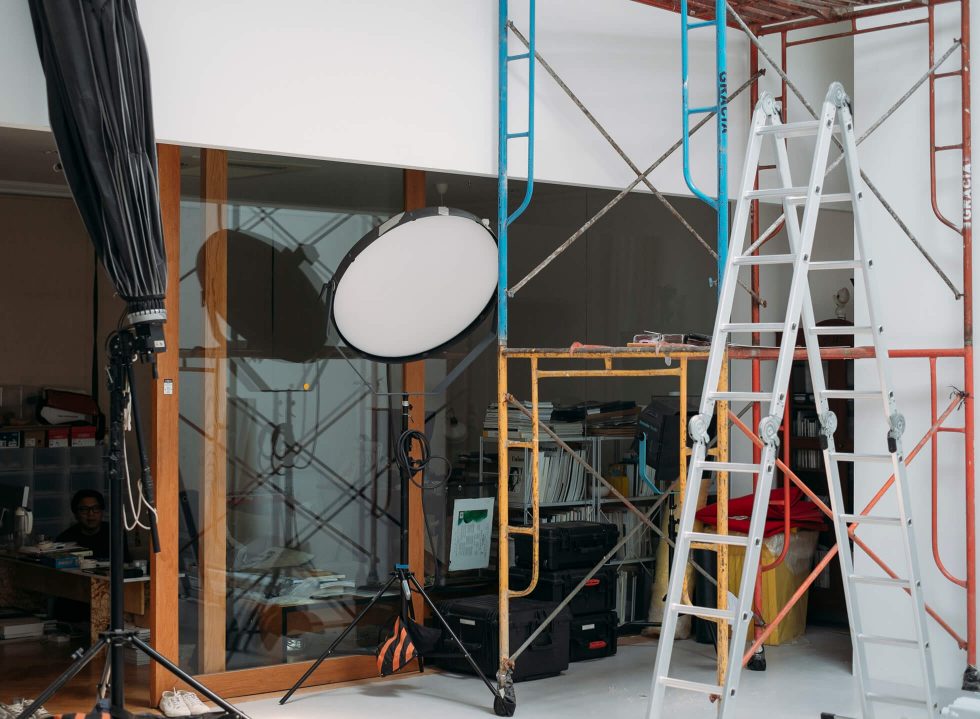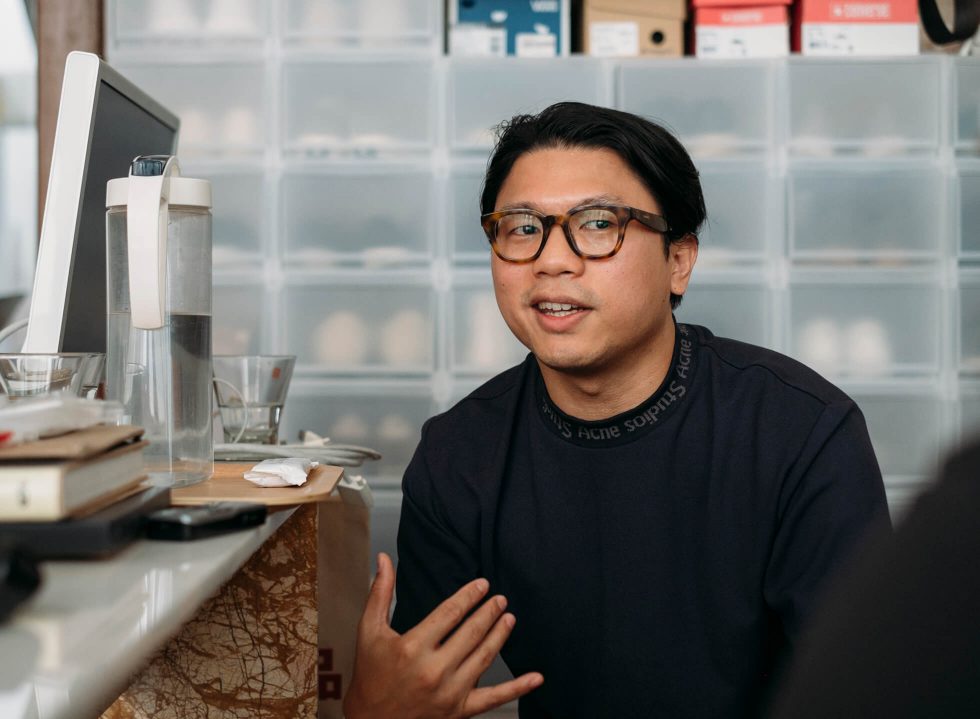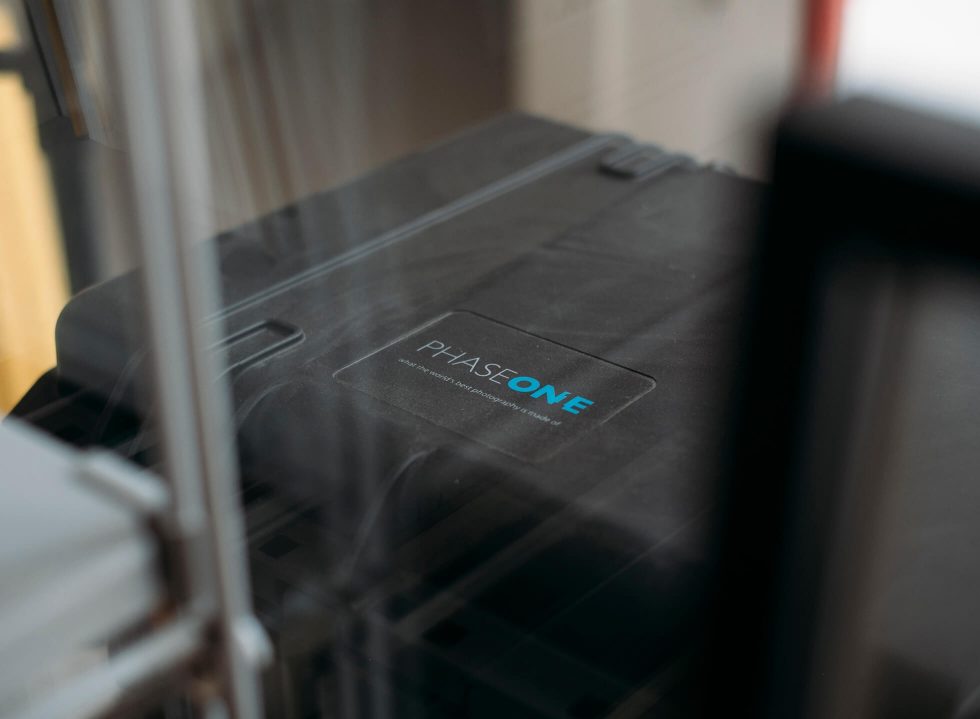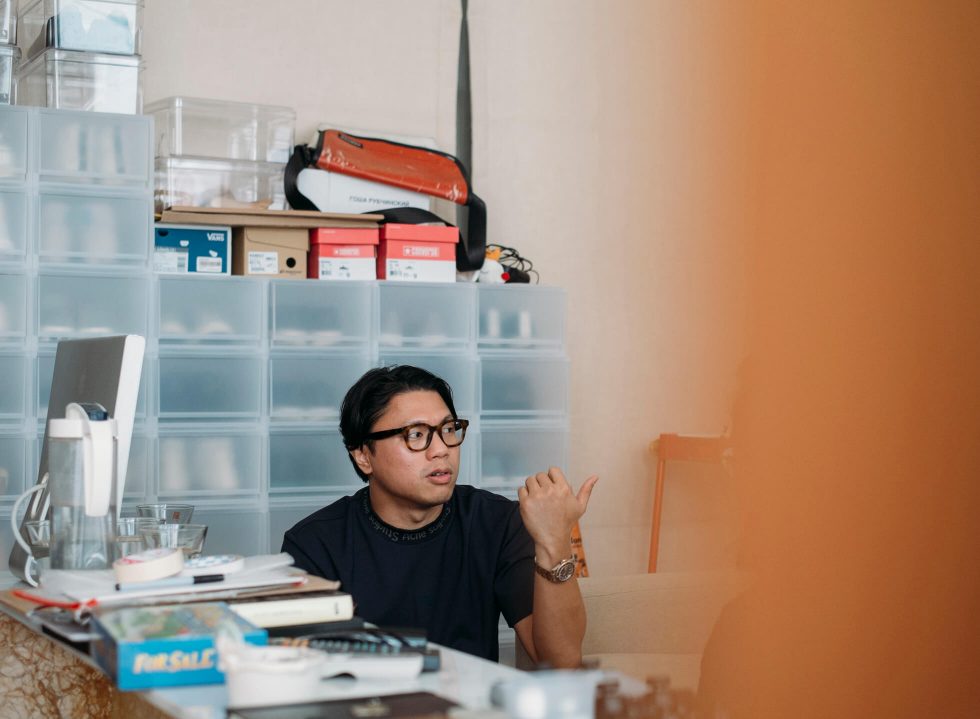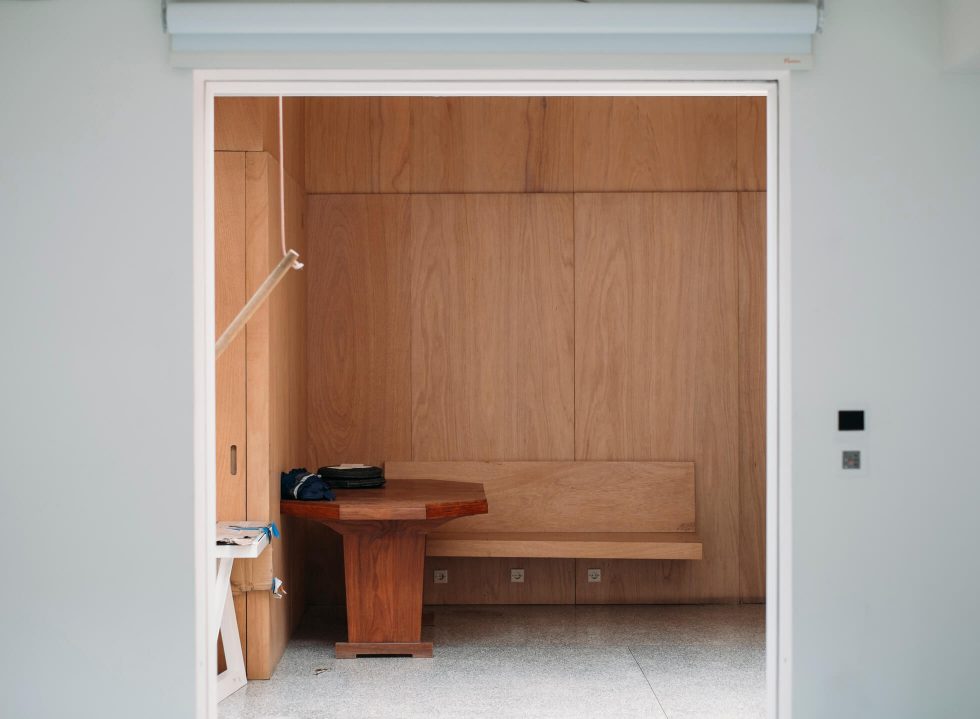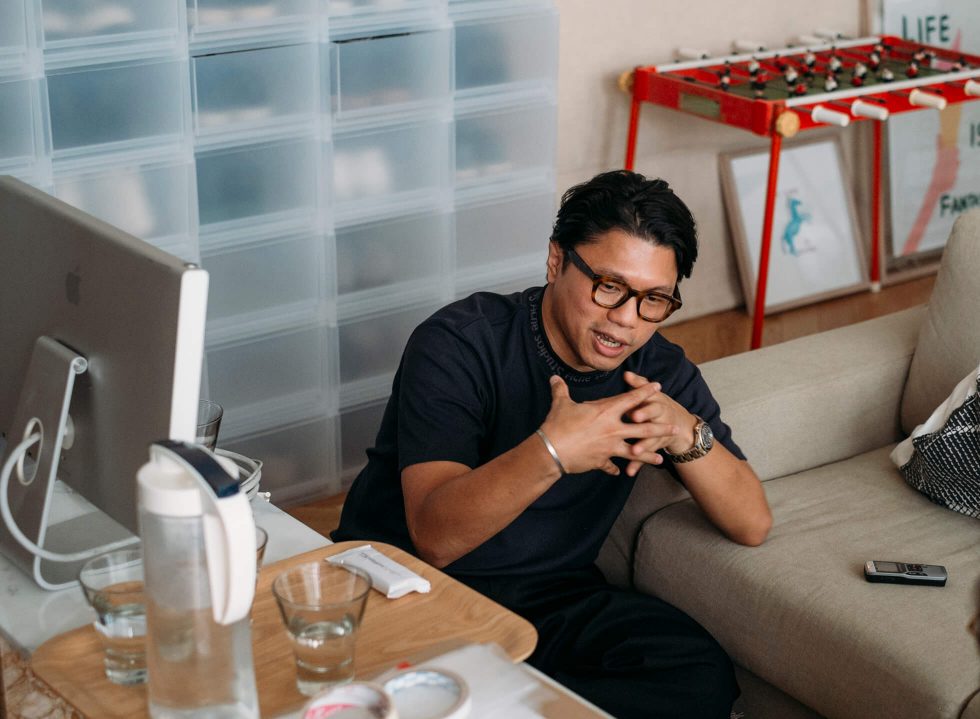In today’s Internet and social media era, the measure of success easily comes down to one’s existence in Google. And yet, Chris Bunjamin is elusive, even on the all-knowing search engine. I’ve scoured the great web and came to his studio in Menteng for the interview, equipped only with a scanty amount of information we know of the photographer.
Apparently, Chris is not one who is overly concerned about his almost “un-Googleable” personal background. In fact, to this he responds in a glass-half-full way of thinking: it shows that his work is impactful and outshines himself, the artist behind it.
Before Chris Bunjamin arrives at where he is now – a highly-sought photographer whose portfolio includes shooting The Royal couple Prince Juan and Princess Kristine Bagration-Mukhrani of Georgia and whose works appear in numerous publications both local and global – he was a school skiver.
“It was crazy, I never studied.”
“I was ‘exiled’ by my dad when I was in high school. It was crazy, I never studied, and played soccer instead, my school grades were such a mess. Until one day dad sent me to Kingston, a small city in Canada – three hours from Toronto,” he says as we sit in Chris’ study room, a compact space located just next to his studio. Instead of conversing on the couch, we sit comfortably cross-legged on the rug beneath. One arm extends over the couch and another resting on the coffee table next to us, Chris looks relaxed in his favourite black Acne Studios top and Sulvam trousers.
Scoundrel is definitely not a word one would typically associate with Chris, especially knowing how his works have struck a chord with many people. The first time we met was back in April in his studio where Chris took portraits of 20 young Jakartans for the second issue of Manual Jakarta Print. Apart from being a fun and easy person to work with, he was also attentively capturing each of their emotions.
At the mention of his rebellious childhood, it was even harder to imagine where he came from: the eldest of four in a privileged family, the son of a pastor. “Well, a part-time pastor,” Chris corrects me. “Maybe because of that my life has gotten better. My parents have been praying for me, man. I’m a lot better person [today].”
Now 34, Chris is well known for photographing fashion editorial for leading local magazines such as L’Officiel, Dewi, ELLE Magazine and The Folio among many others. But his works transcend editorial projects; he’s also recognised for portraiture, photographing fashion campaigns for local labels (for example, Potato Head x Wacko Maria and LEUCA), architecture and product photography (the Italian furniture label Giorgetti is one of his regular clients).
Lately, he’s been dabbling in travel photography. Although this is something that’s hardly new to him – where he ever so regularly post his travel photos on his personal Instagram page – he took it up a notch by collaborating with Emmelyn Gunawan, now his wife, founder of lifestyle boutique Canaan Bali. The result is Canaan in Flores exhibition in KAUM Jakarta that shows Chris’ photographs during his brief visit to the island of Flores, East Nusa Tenggara. The event was met with rave reviews. Artworks and merchandises of the exhibitions were sold out.
“I was depressed and I couldn’t express it to people.”
Canaan in Flores was undoubtedly a promising kick-start to 2018. Entering the year, Chris has been fairly occupied in a handful of other exhibitions. Running alongside his Flores exhibition was also Wonder Foto Day 2018, a distinguished exhibition held in Taipei, Taiwan. Currently, he’s getting ready for his upcoming project with Art for Refuge that’s going to unfold in mid-September.
Come to think of it, years ago Chris wouldn’t have dreamed up all these to happen in his life. Especially during those gloomy ‘exile’ days in Canada. “I was given a limited amount of pocket money. No cellphone. No laptop,” he reflects over the day when he was just arrived in the country, distraught and confused. Yet, his plight barely changed his behaviour. He got suspended from University of Toronto’s business school for skiving off. “I didn’t know what I was doing,” he says.
“I didn’t know what I liked back then. I was depressed and I couldn’t express it to people,” says Chris. After the suspension, Chris switched his business major to criminology (he laughed at my nonplussed expression in response to this revelation) and took photography as his elective.
Initially, photography wasn’t something that captured Chris’ interest. He got a digital camera in high school, but that was it. No spark in the activity whatsoever. However, this happened before the opportunity to rekindle his decaying photography skill came during his free time. An avid fan of cars, Chris was involved in an automotive club – here, he got to learn photography from a friend. From something of a pastime, photography gradually developed into a thing that Chris was really interested in.
“I kind of felt my life was pretty useless because I didn’t know what I want to do in life. But after I started taking photographs, I feel that my life has become useful – people see my work, appreciate and give me feedback. At last, there’s a medium that could make me happy,” says Chris positively.
“I switched my perspective by going against what most people would do.”
Chris’ candidness might be mistakenly interpreted as a cool nonchalance of a high school rebel. But behind this groundless presumption of his personality, his tale as a young boy is a classic drama romp you’d encounter in films: a confused boy groping his way to finding his life purpose.
When Chris rediscovered photography, it wasn’t an overnight success story as one would have liked it to be. In the course of learning applied photography in Sheridan College, Canada, Chris felt that he was almost invisible at school because of his Asian blood. Discouraged, he stopped going to classes and wound up with poor grades. Then it happened. He had had enough of this.
“One time there was a turn around where I thought to myself ‘If I want to do this I have to do my best’,” he says. The class was given the assignment to take portraiture that is worthy to be put up as the cover for Rolling Stone magazine. “I remember it was terribly cold at that time, around minus 25 degrees outdoor. I had the feeling that 90 per cent of my friends would shoot for the assignments indoor … Well, it turns out that everybody else did it in the studio. I was the only one who did it outdoor.” This effort earned him the Best Portraiture Student award, for his deft ability to go against the current and produce a brilliant result. “I switched my perspective by going against what most people would do. That’s what changed me since then.”
Once he returned to Jakarta, another challenge cropped up. A complete rookie in the field, he had to tread carefully on the rough terrain of commercial photography. Slowly but surely, Chris tried his luck on the field through some freelance jobs that he managed to land on. And then, a stint in HighEnd Magazine opened him to more fashion and commercial photography opportunities.
“They are so scared that someone might steal their jobs.”
It was a terrible scene laden with politics and dishonesty, Chris reflects. He remembers casually asking one of his photography colleagues on ways to land a job in a magazine. The answer was surprisingly dismissive; the guy was unwilling to divulge.
But what about today’s scene? I ask Chris whether the nature has changed. “To this day, it’s still the same. Not much difference. They are so scared that someone might steal their jobs. They, being so unforthcoming about what they do,” he fumes.
It wasn’t just that. “A lot of my friends whom I have introduced to my clients to snatched my projects. But I was completely fine with it. Maybe it’s time for me to move to the next level and find something better.” Then he adds resolutely, “I’m still friends with that one friend who took my project.”
“It’s not like I have to worship my clients in order to get that project. You just have to be natural,” he says. “The tough part is learning how to let go. It’s important to be able to let go of something in order to gain something much better.”
Letting go. It may sound a little bit weird for a career advice. But this is coming from Chris Bunjamin, whose list of clients and projects takes pages to tell. Instead of wallowing in the deep resentment towards being unjustly treated by his fellow photographers, Chris demonstrates the opposite to those who have come to him for advice. He has no qualms in giving out references to just about “anyone”, he says. “Don’t be so stingy to other people. You have to support others. By doing that, you will also learn something, right? If you’re worried about sharing then that means you don’t believe in your own work.”
“You have to suck it in at the beginning. You just have to be resilient.”
The conversation veers into talking about Chris’ photography style: his shots are raw with a slapdash vigour that often catches his subjects unprepared. Clients and brands have come to him for this character.
“Authenticity is something that is hard to come by in photography world nowadays,” he says. With the help of Instagram and the Internet, access to photo references is available at one’s disposal. References are important for ideas, however “one has to understand himself … and be clear on what he wants to deliver [as a photographer]. You have to show your true colours.”
“If you want to be an artist, you have to be someone who is real. So that people may understand your personality. Be yourself. It’s rather hard indeed, especially nowadays. Of course, you have to suck it in at the beginning. You just have to be resilient,” says Chris. “But don’t ever forget your dream along the way.”
It’s been a long hike up in Chris’ career. And he’s got his parents to thank for. His parents, who used to be against his photography, now have fully supported him. “I think I’m the most rebellious one in the family,” he laughs. “But my dad said, ‘You wouldn’t be where you’re at now if you hadn’t dreamt years ago.’”
Yes, I concur, you are someone now. “It’s the prayer. If not, I would have been so depressed – felt like I almost died, man. But God gave me photography,” he replies.
Chris getting depressed? I could hardly conjure such an image in my mind. Also, despite the fact that he’s about to get married in two weeks, he doesn’t show any signs of, well, stress. He remains cheery and casual as ever. But the wedding isn’t his last stop in 2018.
Apart from being busily involved in a special project with Yayasan Mitra Museum Jakarta (an organisation that seeks to improve Jakarta’s museum management) where he gets the privilege to photograph 12 prominent museums in Jakarta along with its extensive collection, he is now in the midst of completing his upcoming collaboration with refugee kids of Roshan Learning Center, due to show at the National Gallery at the 20th of September.
It’s been nearly a year since Chris started volunteering to teach photography to refugee kids from the learning centre, a community-run hub that provides educational courses for asylum seekers mainly from Afghanistan and Iran. One of the programs in which Chris has been involved in is Art for Refuge, an initiative that aims to empower refugee children and youth through art.
Once a week, Chris teaches basic photography to youth from 13 to 18 years old. I ask how it’s like to teach them. “I didn’t know that I would be involved in it this deep,” he says. The stress is unavoidable he says. Some students would skip lessons, while others would forget and complain about their homework. After all, it’s kids he has to deal with.
“Once I had to tell my students off for whining about their assignment. They whined even before they give it a try (the task is to photograph forty strangers in Jakarta). I said to them ‘You guys have to go out, break through your comfort zone. You have to be able to put up with rejection!’,” says the teacher.
“I was worse than them.”
Since then, they listen to what Chris says. He’s proud to mention that his students have shown positive progress and are no longer afraid of completing their upcoming tasks. It’s definitely his calling, I figure. “I’ve always felt that my lessons lacking in some ways. Often, I would consult the kids. Do you know what their answers were? ‘You’ve taught everything to us. The other boys who have been skipping the class are missing out,’” says Chris with a hint of pride in her tone.
Teaching these kids, has it occurred to you that you were in their position too back in Canada?
“I was worse than them,” he chuckles. “Even my assistant in the studio is only 21 years old and has done great things. I told him that he can be better than me.”
One thing for certain, it takes years to shape a photographer of Chris Bunjamin calibre. But artistry and skills aside, it all comes down to the character. And it is his genuineness and humility that puts him up there in the Who’s Who of contemporary artists and photographers. “Luckily, God saved me that time when I almost lost my aspiration. He brought me to the right people at the right time,” he says with a deep humility. “It’s a blessing.”
